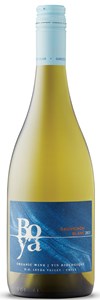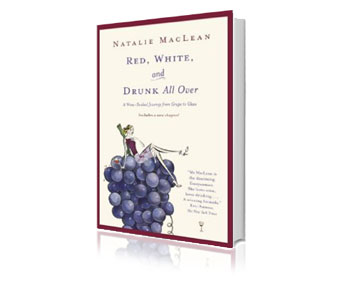Boskydel Vineyard

Boskydel Vineyard
7501 E Otto Rd
Lake Leelanau
USA 49653
Phone: (231) 256-7272
http://www.boskydel.com/
Contact: Jim Rink
Email: [email protected]
Field of Dreams in Leelanau County
By Jim Rink
I first realized that my father was serious about growing grapes when he announced his intention to raze our modest, but popular baseball diamond in favor of a nursery. My brothers and I created that ball park, hacking it out from a fallow field with a regular push-type lawnmower. We even built a substantial chicken-wire backstop to halt the progress of an errant pitch.
In a rude reversal of the magical "Field of Dreams" scenario, Bernie Rink told us the diamond would have to go, replaced by a crop that no one in those parts had ever heard of-wine grapes.Little did we know at the time, that his field of dreams would eventually lead to the establishment of the commercial wine industry in northern Michigan.
It began in 1965, when dad got hold of Phil Wagner's book, "American Wines and Winemaking" (published today as "Grapes Into Wine"). As the library director of Northwestern Michigan College in Traverse City, he had access to a lot of books. He also had access to land, having bought 16 rolling acres in the middle of Leelanau County, the state's "little finger," jutting out into northern Lake Michigan. Sitting on the 45th parallel, the peninsula is on a latitudinal par with winegrowing regions in southern France and northern Italy.
In an effort to turn his five sons into economic assets, Bernie decided to plant a one-acre test plot of several French-American hybrid grape varieties and a few of the less hardy vitis vinifera-Chardonnay, Johannisberg Riesling and Gewurtztraminer. Back then, the hybrids were all numbered - Seibel 5279 (Aurore), Seibel 7053 (Chancellor), Seibel 9549 (deChaunac), Seibel 10878 (Chelois) and Seibel 13053 (Cascade). Seibel, needless to say, had a lot of time on his hands.
As economic assets, we were expected to chop weeds in the sweltering heat of mid-summer and pick grapes in the stinging sleet of late fall. Not to mention pruning in knee-deep snow in the winter and sorting out the good wood, which would be plunged into our new-found nursery in the spring to repeat the endless, monotonous cycle.But it was fun. We used to make up lively little songs about the vineyard to the tune of "Tah, Rah, Rah, Boom-de-ay":
We work at Boskydel,
the closest thing to hell.
We're never treated well,
at slave camp Boskydel.
Working closely with Bernie in the early days was retired Michigan State University chemistry professor Bob Herbst, who established an experimental vineyard of his own in 1971 on the cooler east shore of Lake Michigan. Due to the difference in microclimate between the two sites, Herbst's hybrids would often ripen a week later.
The hybrids served as the "work horses" of these wineries, which needed a consistent crop of dependable wine grapes to become established.
In 1977, Leelanau Wine Cellars, Ltd. debuted. Begun by local cherry grower Chuck Kalchik and his partner, attorney Mike Jacobson, the winery is the largest on the Leelanau Peninsula. Nate Stackhouse, their first winemaker, was a congenial, outgoing individual. He and my father shared many an afternoon comparing notes and vintages. Nate once helped us out with a mysterious pectin haze which developed in one of our reds. Leelanau is probably most famous for its cherry wine, a mainstay that will always be popular with the tourists who visit Traverse City, the "Cherry Capitol of the World."
The winery currently has 35 acres of grapes and 20 acres of plantable land, which they intend to convert to Chardonnay and Pinot Noir. They produce wines from Aurore, Vignoles, Baco Noir, Riesling, Chardonnay and Pinot Noir. Proprietary labels include Renaisannce, Spring Splendor, Summer Sunset, Autumn Harvest and Winter White.
In 1978, Larry Mawby unveiled the third Leelanau Peninsula winery: L. Mawby Vineyards. Called "the best of a new breed of Michigan winemakers" by Detroit Free Press writer James Ricci, Mawby lives up to his reputation by producing traditional, French-style table wines of the highest quality. L. Mawby's annual production of 2,400 cases is small, on purpose. Crucial to the Mawby method are imported French oak barrels and a high-powered air rifle to "scare" the birds away in the fall.
Both Mawby and Rink subscribe to the French "dying vine theory" which broadly states: the harder a vine has to struggle to survive, the better the wine. This does not mean they go to great lengths to harm the vine; they just don't go out of their way to help it.
Larry was one of our best customers at the baseball field, uh, I mean, grape nursery. His first vineyard was planted in the spring of 1973 and now totals 10 acres. His mainstay varietals are Vignoles, Seyval Blanc, Marechal Foch, Pinot Noir, Pinot Gris and Chardonnay. In addition to his popular proprietary labels, Sandpiper, Turkey Red and P.G.W. Pun, Mawby makes a methode champenoise Brut sparkling wine from his estate vineyards.
To the uninitiated, Mawby's winery is difficult to locate. Visits by groups numbering more than 20 persons are frequently discouraged. Boskydel is not so easy to find either. The proprietor often asks customers if they are lost. This adds to the mystery and allure of shopping for wine in Leelanau County.
Last, but not least in the current crop of Leelanau Peninsula wineries is Good Harbor Vineyards, owned by Bruce Simpson. Opened in 1980, the winery is equipped with 30,000 gallons of stainless steel cooperage and 2,500 French oak barrels.
The Simpson family has been in the fruit business on the Leelanau Peninsula since the mid-1950s. Bruce studied enology at the University of California-Davis until 1978, when he began planting wine grapes, courtesy of our baseball field, uh, I mean, grape nursery.
Good Harbor is most famous for its delightful blend, Trillium. The label was a marketing masterpiece, based on a popular Michigan wildflower, which resulted in wide acclaim and increased sales. Other Good Harbor varieties include Vignoles, Seyval Blanc, Marechal Foch, Riesling, Chardonnay, Carmine, Lemberger and Pinot Gris.
Simpson, Mawby and Rink are responsible for promoting Leelanau Peninsula wines and putting them, and the industry, in the limelight. There are now two wine festivals each summer which draw large crowds, and the wineries are constantly filled with loyal customers who spread the word on the newest local vintages.
In 1985, in recognition of the growing importance of winegrowing to the state, Gov. James Blanchard formed the Michigan Grape and Wine Industry Council, of which Rink was a founding member.
In this same enterprising spirit, Simpson and Mawby have formed a vineyard management company to encourage other growers in the area to plant wine grapes. In 1990, 20 acres of Chardonnay, Vignoles and Pinot Noir were planted by new growers.
Meanwhile, on Old Mission Peninsula, former priest Bob Begin is in full swing with his combination winery, vineyard and bed and breakfast, Chateau Chantal. And Bowers Harbor Vineyard and Winery is the latest newcomer to the growing field. Editor's note: For an update on the growing Michigan wine industry, see my Michigan Living article.
It's hard to imagine that, from a former baseball field, 18 wineries and scores of vineyards have sprung into existence. Will Michigan's "little finger" become the Napa Valley of the North? What happens if more than 20 people visit L. Mawby Vineyards? Will people ever get tired of the name "Trillium?"
The questions raised by these and other pressing problems remain to be answered. Personally, I'm more worried about the fate of Boskydel's nursery. Several years ago, my father razed it to plant Chinese chestnuts, which he likes to roast on top of a wood-burning stove for customers.
Who knows? Maybe someday it will be a baseball field again. Well, a guy can dream, can't he?
Winemaker: Bernie Rink
Facebook: http://www.facebook.com/groups/88625342644/
Update Winery information Submit new wines to be posted Wineries of America
Although there aren't any wines associated with this winery, Natalie may have reviewed brands that this winery produces and she just didn't know to designate this winery in her tasting note. You can search here for specific brands.
 Best Books of the Year
Best Books of the Year Best Books of the Year
Best Books of the Year

















